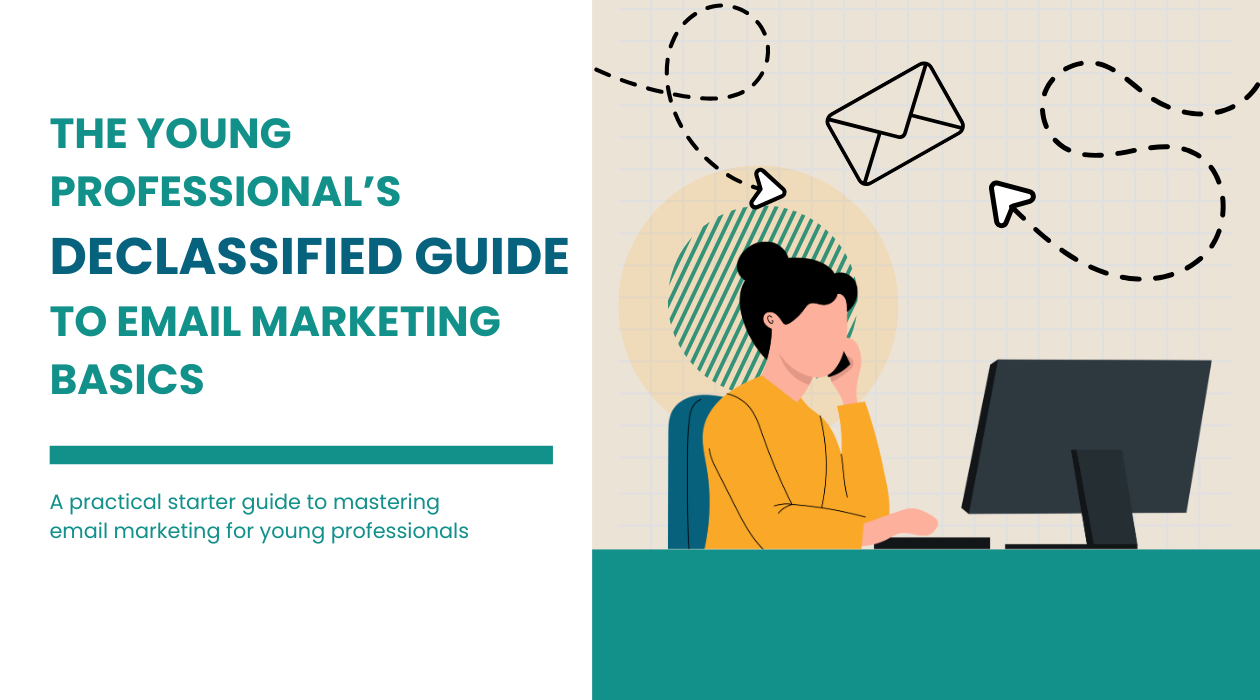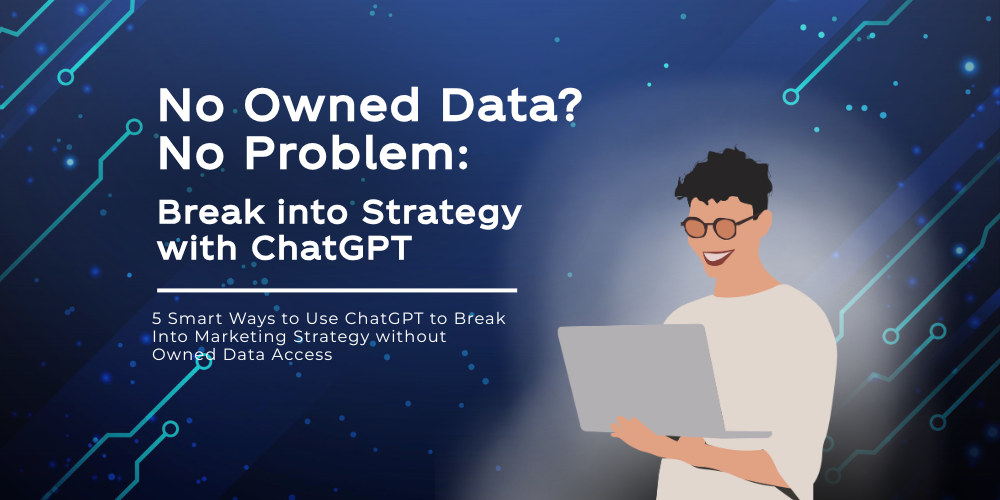So you’ve landed in the world of email marketing. Some of us chose this path, and some of us found ourselves here and ended up loving it (guilty as charged).
Maybe you’re the intern tasked with sending the company newsletter. Maybe you’re curious about specializing in this channel. Maybe you’re staring at your ESP dashboard wondering what the heck DKIM means.
From one young professional to another, welcome. Email marketing can be messy, technical and overwhelming, but it’s also creative, rewarding and often lauded as the highest driver of ROI in the entire marketing mix. It’s also one of the few customer communication channels unshackled by the algorithm Gods, making it the best way in 2025 to build an audience that’s truly yours.
Below are some tips for a beginner dipping their toes into this comparatively ancient form of marketing (invented in the long distant past of 1978). Each of these sections could merit their own blog post, so I encourage you to dig deeper on any topic that piques your interest.
Get Inspired: Build a Swipe File
A swipe file is your personal library of inspiration – so next time you have 10 emails on the calendar and zero ideas, you won’t be stuck staring at a blank screen.
Build it by saving or screenshotting emails you find in the wild with clever subject lines, designs or copy (kind of like a Pinterest board for emails).
You can use a folder on your desktop, keep the files organized on Notion, or my personal favorite, use Really Good Emails. RGE is a curated gallery of email marketing samples uploaded by users that you can filter by industry, email type and style. The platform allows you to save emails you like, and even copy the HTML so you can rework the template for your own brand.
Write Emails People Actually Want to Read
Even in 2025, being human has some advantages. Customers are seeing inboxes flooded with generic, AI-generated copy.
AI can be a great tool for generating ideas or structure, but what really cuts through the noise these days is an authentic voice paired with a level of customer insight only a being with empathy is capable of.
Writing authentically doesn’t have to mean pushing brand guidelines aside in favor of your personal style – but balancing the two can be a delicate dance. I’ve found it helps to imagine you’re writing to a person, conversationally, rather than a faceless list of subscribers.
Understanding and relating to your target audience’s pain points and values can help with this. Even if your brand voice is formal, acknowledging their experiences through concrete examples can help create a human connection. Email has more opportunities for personalization than any other platform, so take advantage of that through your copy to make your subscribers really feel seen. And if you’re not sure how a specific tone will sound to one of your audiences, you can always A/B test your copy to see what performs best.
As inboxes get more crowded and attention spans get shorter, getting people to actually read your email can be a struggle. To take advantage of the approximately eight-second grace period you have to get their attention after opening an email, make sure your most impactful call to action is “above the fold” – visible without scrolling down on both desktop and mobile.
Of course, before anyone sees your call to action, they have to open the email. Generally, it’s advised to keep subject lines short, specific and curiosity-driven, and A/B test multiple versions to see what lands best with your audience. CoSchedule’s free Headline Analyzer can be a good tool for checking how “clickable” your subject line is.
If you want to sharpen your email writing instincts, subscribe to emails that do it well. Newsletters like Morning Brew, Total Annarchy and The Skimm are some personal picks. Even subscribing to your favorite retail brands can teach you a lot about tone, timing and how to hook readers quickly.
Design for Humans and Inboxes
As a rule, check for accessibility before sending any marketing email. Include descriptive alt text for images, use fonts that display correctly on mobile screens and make sure your designs pass color-contrast checks to ensure legibility. Free tools like WebAIM’s Contrast Checker can help you check if your color contrast ratios are ADA-compliant.
Here are a few guidelines to help with accessibility and consistency across inboxes:
Design Mobile-First
It’s safe to say that most email opens in 2025 happen on smartphones. I mean, how many of us compulsively check our email right when we wake up (or is that just me)?
If your builder doesn’t have a mobile preview, send a test to yourself and check how it renders on your phone. What looks perfect on a desktop may be a disaster when scaled down.
Respect the Rise of Dark Mode
According to a 2022 survey, approximately 34% of Litmus users employed dark mode, and that number continues to increase. This is your sign to test your campaigns on multiple devices and platforms to make sure your designs stay readable (and attractive) when colors invert.
Don’t Rely on Images Alone
Some people disable images altogether in their inbox. Always make sure the core message comes through in text form, and never send an “image-only” email.
Choose Fonts That Won’t Betray You
Web-safe fonts are your friend. They help make sure your fonts stay consistent across most email clients so that your slick, modern design doesn’t suddenly show up in Times New Roman in someone’s Outlook inbox.
Following accessibility best practices is not only considerate of your subscribers, but also helps make sure your messages land in the inbox – which brings us to our next point.
Deliverability: Protect Your Reputation
Deliverability is arguably the most complicated aspect of email marketing, but also the most important (funny how life works like that). It’s what decides whether your carefully crafted emails actually make it into the inbox or end up buried in spam.
One of the biggest factors in deliverability is your domain’s sender reputation. Below is a quick overview of tactics that can help build your trustworthiness to inbox providers.
The first step is authenticating your domain with SPF, DKIM and DMARC so providers can trust that your messages are legitimate. Don’t worry, I didn’t smash my keyboard – learn more about email authentication and what those acronyms mean here.
Another important factor is who you’re sending to. Clean, opted-in lists will protect your reputation, while purchased contacts or inactive subscribers will drag it down with bounces, unsubscribes and complaints. A smaller, more engaged email list is always more valuable than a huge, inactive list.
Engagement also builds trust. When people open, click and interact with your emails, inbox providers take it as a sign your content is valuable. If subscribers frequently ignore or delete your messages, future campaigns are more likely to be filtered out.
Segmenting your audience is one of the best ways to improve engagement and protect deliverability. Instead of blasting one generic message to your entire database, break your list into smaller groups based on things like purchase history, interests, job role or customer lifecycle stage. Sending to fewer people at a time reduces the risk of deliverability issues and personalized content almost always drives higher opens and clicks.
Think of your sender reputation like a credit score. Once it’s damaged, it’s difficult to rebuild. Monitor it through your ESP, and your emails will have a much better chance of reaching the inbox every time. Free tools like Sender Score can give you a quick overview of how you’re doing on deliverability.
Pay Attention to the Right Metrics
Pre-2021, open rates used to mean something. Then Apple’s Mail Privacy Protection blurred the data. Okay, open rates can still be a useful metric when comparing performance email-to-email, but they don’t tell the full story.
Click-through rates are now the north star for determining engagement. Conversion rates tell you whether that engagement led to action. High unsubscribe rates or spam complaints tell you that the message wasn’t right for your audience.
When analyzing your email marketing performance, look at trends over time. Using UTM codes in Google Analytics to track behavior are especially helpful for this. Tracking important metrics for each campaign in a spreadsheet isn’t a bad idea either.
A/B testing — sending two slightly different versions of an email to see which performs better — is another powerful way to sharpen your strategy.
Every email audience is unique, so it’s all about seeing what resonates. Does your audience prefer heavily designed emails or a more minimalist approach? Do they like playful copy or value clarity above all else? There are endless elements you can test: subject lines, preview text, send times, button placement, imagery, tone of voice, the list goes on.
The results of your A/B tests don’t just help you improve your next email. They can also be shared across your organization to inform design choices, messaging styles or even social and web content strategies. Your inbox becomes a built-in testing ground for insights the whole marketing team can use.
Advocate for Yourself Early
If you’re an intern or fresh out of university, it’s easy to feel like you’re “just” the junior marketer. But don’t forget that email is one of the biggest revenue drivers for most businesses, and your work directly impacts results.
Share your wins. If your latest welcome series redesign boosted clicks by 20 percent, highlight it. Senior staff love data, and it helps illustrate the impact you’re making.
Stay Informed
Like an Eldritch beast, email has survived the ages. It’s safe to say it will stick around, but it’s no doubt evolving.
AI will continue shaping the industry, especially in personalization and testing. Privacy laws will keep tightening, which makes zero-party data (the information customers willingly share) more valuable than ever. Interactive features like polls or even in-email shopping are likely to become more popular.
Attending webinars, subscribing to newsletters and reading articles on email marketing regularly can help you stay informed. Some thought leaders I follow are Jay Shwedelson, Michael Barber and Naomi West. The Email Geeks Slack channel is also a cool resource for anyone who wants to connect with email marketing professionals, get advice or search for jobs.
The best way to stay ahead is to experiment early and keep learning. Enrolling in certifications and courses from companies like HubSpot Academy or MarketingProfs are worth exploring if you’re interested in specializing.
Remember, every email you send out is a learning opportunity – whether it’s an A/B test or an accidental deployment at the wrong time (we’ve all been there). You don’t have to know everything on day one. What matters most is your fresh perspective, your curiosity and willingness to adapt. But most importantly, have fun!



